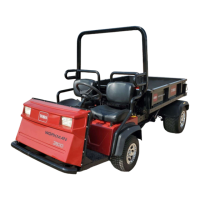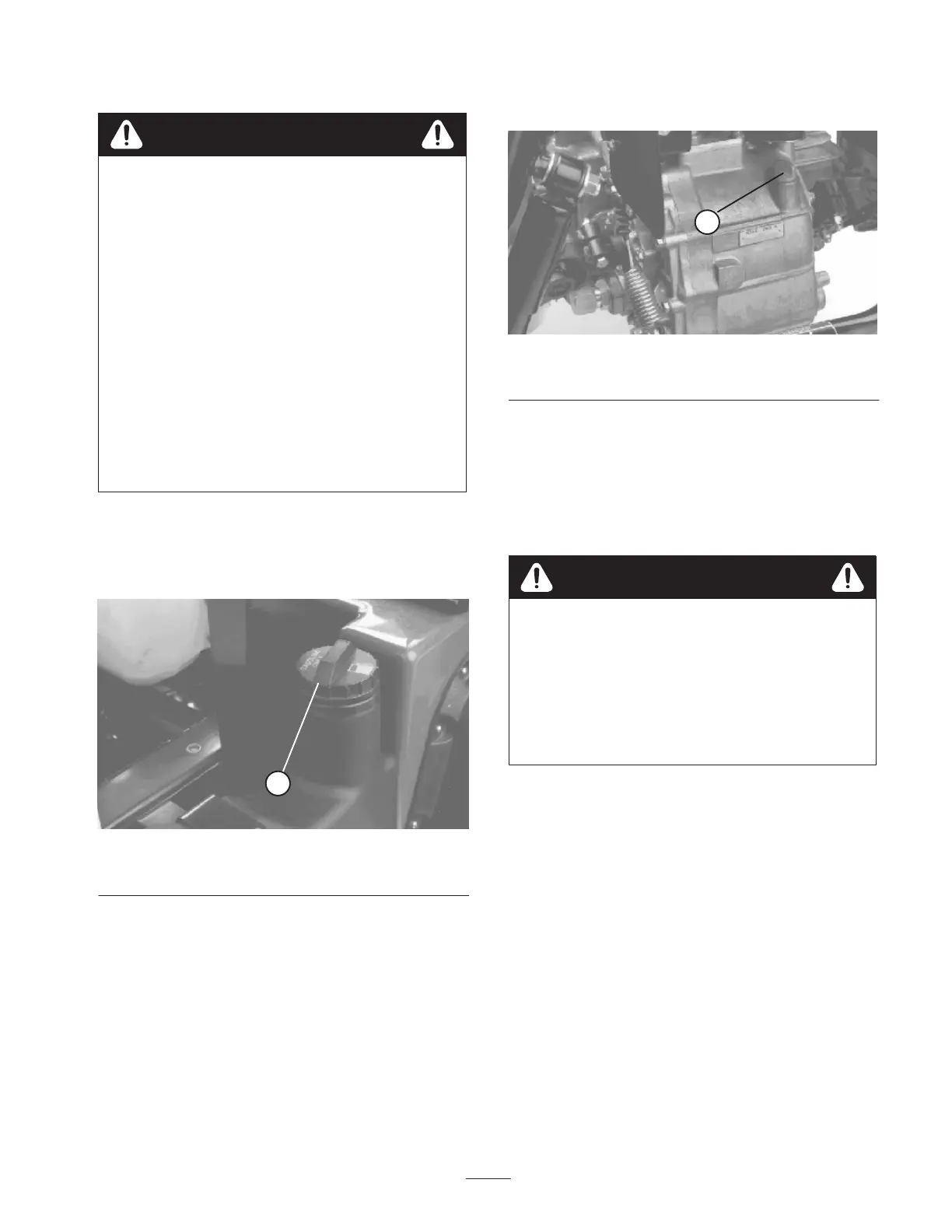19
2. Remove fuel tank cap.
Danger
Under certain conditions, diesel fuel and fuel
vapors are highly flammable and explosive. A fire
or explosion from fuel can burn you and others
and can cause property damage.
• Use a funnel and fill the fuel tank outdoors, in
an open area, when the engine is off and is cold.
Wipe up any fuel that spills.
• Do not fill the fuel tank completely full. Add fuel
to the fuel tank until the level is 1/4 to 1/2 in. (6
to 13 mm) below the bottom of the filler neck.
This empty space in the tank allows the fuel to
expand.
• Never smoke when handling fuel, and stay away
from an open flame or where fuel fumes may be
ignited by a spark.
• Store fuel in a clean, safety-approved container
and keep the cap in place.
3. Fill tank to about one inch below top of tank, (bottom of
filler neck). DO NOT OVERFILL. Then install cap.
4. Wipe up any fuel that may have spilled to prevent a fire
hazard.
1
Figure 9
1. Fuel tank cap
Check Transaxle / Hydraulic
Fluid
The transaxle reservoir is filled with Dexron IIl ATF. Check
level before engine is first started and every 8 hours or
daily, thereafter. Capacity of system is 7.5 qt.
1. Position the vehicle on a level surface.
2. Clean area around dipstick.
3. Unscrew dipstick from top of transaxle and wipe it with
a clean rag.
1
Figure 10
1. Dipstick
4. Screw dipstick into transaxle and make sure it is seated
fully. Unscrew dipstick and check fluid level. Fluid
should be up to top of flat portion of dipstick. If level is
low, add enough fluid to achieve the proper level.
Check Torque Of Wheel Nuts
Failure to maintain proper torque of the wheel
nuts could result in failure or loss of wheel and
may result in personal injury.
Torque the front and rear wheel nuts to
55–75 ft.-lb. after 1–4 hours of operation and again
after 10 hours of operation. Torque every 200
hours thereafter.
Warning
Check Tire Pressure
Check tire pressure every 8 hours or daily to assure proper
levels.
Maximum air pressure in front and rear (23”) tires is 20 psi.
1. The air pressure needed is determined by the payload
carried.
2. The lower the air pressure, the less the compaction and
tire marks are minimized. Lower pressure should not be
used for heavy payloads at high speeds. Tire damage
may result.
3. Higher pressures should be used for heavier payloads at
higher speeds. Do not exceed the maximum pressure.

